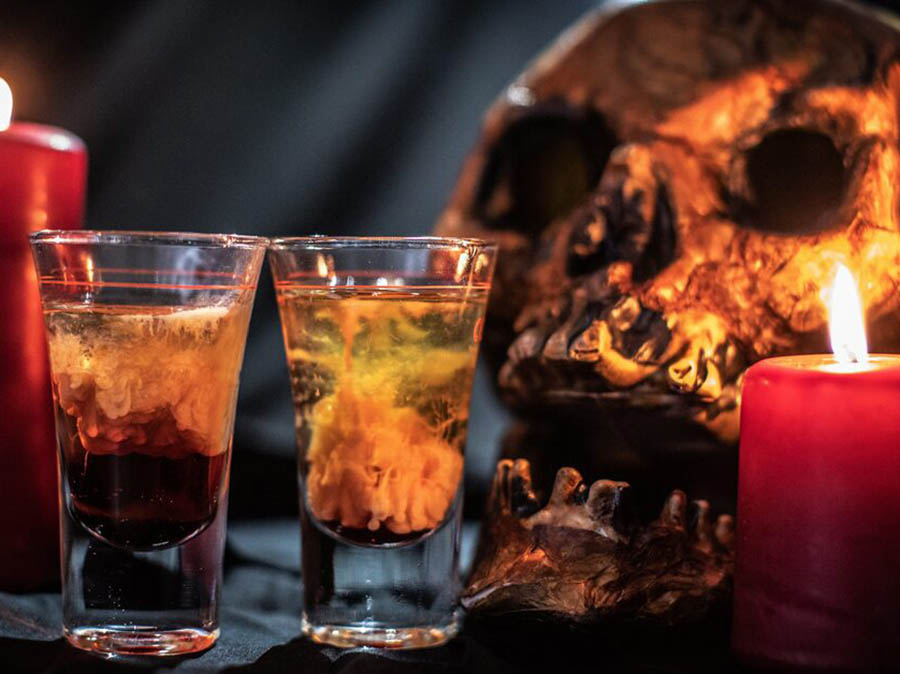
Nam Man Prai – Necromantic Oils
Nam Man Prai, a term enveloping a spectrum of magical oil-based potions in Southeast Asian Necromantic Sorcery, holds various forms—some created through necromantic processes, others derived from the plant kingdom yet still considered necromantic due to their origin from plants that perished under mysterious circumstances. These plants are believed to house ‘Sing Sathit’ deva and ghost spirits, intertwining the realms of Prai Sorcery, be it Human Necromancy, Animist Necromancy, or Plant Kingdom Based Necromancy.
In contemporary times, true necromancy is a rarity, given its infringement of various laws. Most necromantic amulets today employ alternative, auspicious methods to achieve similar results. Nevertheless, exceptions persist, particularly among Lay Masters who, at times, face legal consequences for engaging in necromancy without proper authorization. True Nam Man Prai can still be sourced by those deeply entrenched in the occult scene, maintaining their underground niche.

Nam Man Prai Phii Dtaay Hoeng:
This unique oil is extracted from beneath the chin of a corpse that met its demise in fear or stress, indicating an unnatural death. Another variation, ‘Phii Dtaay Hoeng Tang Glom,’ necessitates the corpse of a woman who died unnaturally during pregnancy, with both mother and child interred together.
The extraction process involves Ritual Necromantic Sorcery performed by a ‘Hmor Phii’ (Witch Doctor) Necromancer in a graveyard. The necromancer must appease the guardian demon of the cemetery to gain permission for the ritual. Following a successful ritual, the necromancer, accompanied by a team, digs up the grave after neutralizing curses and identifying the true key enchantment that needs destruction to raise the dead.
Upon finding three hidden stones, one harboring a genuine curse, the necromancer deactivates the spell and opens the coffin. As the coffin is unsealed, the spirit of the angry Phii Dtaay Hoeng is released, seeking a victim for its wrath. The necromancer must subdue the spirit, compelling it to serve the Buddha Dhamma through the empowerment of amulets. The necromancer then raises the corpse, extracting oil from beneath the chin for later dilution or mixing with Muan Sarn Sacred Powders and Bone Powders of Kumarn Tong or other necromantic animist charms.

Nam Man Prai Kumarn Tong:
This oil is directly extracted from a baby who met a violent or sudden demise, often by roasting the Kumarn over a fire. Used in Kumarn Tong amulets and other love charms, the sacred oil is charged further by adding magical objects and substances.
Nam Man Paya Suea (Tiger Oils):
Tiger Oils, historically revered and currently rare due to tiger protection, are sought after for their potent properties. Old tiger oils from ancient masters may contain true tiger oils, but even these require certification from the Wildlife Protection Ministry. Tiger Oil is associated with commanding power, evasion, invincibility, mercy charm, seductive influence, treasures, promotion, and status increase.
Prai Oils for Gays and Lovers:
Nam Man Prai is a popular seductive attraction agent used by both men and women in gay and straight communities. Renowned for its rapid and powerful effects, it serves love, seduction, Kama Sutra Tantric Sex Magic, and binding the hearts of others.
Herbal Necromancy:
Some practitioners, adhering to the 5 Precepts, avoid necromantic oils from corpses and instead utilize extracts from herbs, pollens, trees, and other magical plants. They invoke the spirits of the plant kingdom, aligning with the principles of White Magick.

Prai Oils for Gamblers and Businessmen:
Nam Man Prai is employed by shop owners, market traders, and businesspersons to enhance success through customer attraction, increased likeability, mercy charm for favor from investors and superiors, and wealth attraction through convincing speeches (jerajaa).




